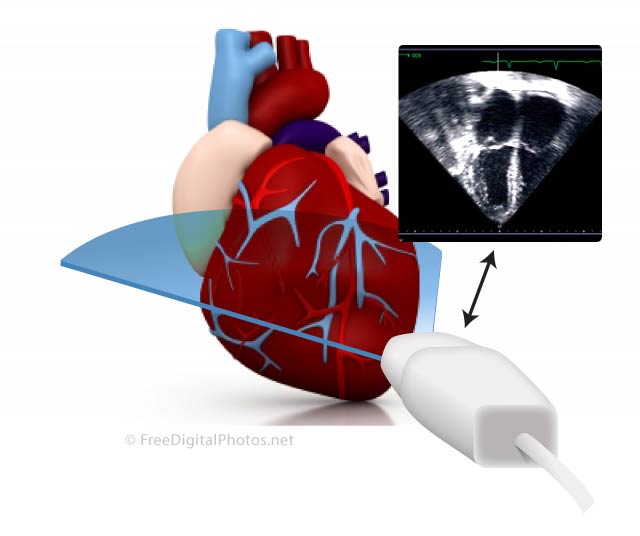Echocardiogram
An Echocardiogram can detect many different types of heart problems. Ask your doctor if an Echocardiogram is right for you.
An echocardiogram shows the size, structure and movement of the different parts of your heart, including the valves, the septum (the wall separating the chambers on the right and left sides of the heart), and the walls of the heart chambers. The Doppler ultrasound technique shows the movement of blood through the heart.
An echocardiogram may be performed to:
- Assess the overall function of your heart.
- Determine the presence of many types of heart disease.
- Follow the progress of heart valve disease over time.
- Evaluate the effectiveness of medical or surgical treatments.
 Echocardiogram can detect many different types of heart problems. Some of these can be minor and pose no risk to you. Others can be signs of serious heart disease or other heart problems. An echocardiogram can provide information on:
Echocardiogram can detect many different types of heart problems. Some of these can be minor and pose no risk to you. Others can be signs of serious heart disease or other heart problems. An echocardiogram can provide information on:
- The size of your heart. An enlarged heart can be the result of high blood pressure, leaky heart valves or heart failure.
- Heart muscles that are weak or aren't moving properly. Weakening could mean that the area isn’t getting enough blood supply, due to coronary artery disease.
- Problems with your heart’s valves. Echocardiogram can show whether any of the valves of your heart don’t open normally or don’t form a complete seal when closed.
- Abnormalities in the structure of your heart. Echocardiogram can detect a variety of heart abnormalities, such as a hole in the septum (the wall that separates the two chambers on the left side of the heart from the two chambers on the right side) and other congenital heart defects.
When tests such as these are conducted early, our doctors are able to identify indicators which will help them prescribe proactive treatments which can reduce the risk of Heart Disease and other complications.
